Note: This fact sheet is also available as a chapter in a comprehensive manual titled Dune Restoration and Enhancement for the Florida Panhandle, available in pdf form here: https://edis.ifas.ufl.edu/pdffiles/SG/SG15600.pdf. Please see the manual for more information about other useful and attractive native plants for dunes and for further information about restoration and preservation techniques.
Asteraceae
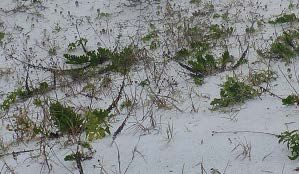
Credit: Mack Thetford, UF/IFAS
Two species of goldenaster are found on beach dunes within the western Panhandle of Florida (FNAI 2000). Chrysopsis gossypina subsp. Cruiseana (Cruise's goldenaster) and Chrysopsis godfreyi (Godfrey's goldenaster), which is further differentiated into two morphologically distinct forms, Chrysopsis godfreyi f. godfreyi (pictured below right) and Chrysopsis godfreyi f. viridis (pictured below left).
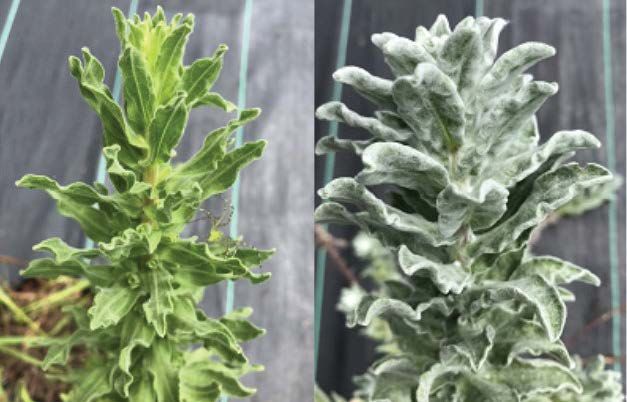
Credit: Mack Thetford, UF/IFAS
Both forms of Chrysopsis godfreyi and Chrysopsis gossypina subsp. Cruiseana share many morphological similarities and co-occur in coastal plant communities. They are presented together to provide distinguishing characteristics among the these species. A summary table of vegetative characteristics and photos is also provided.
General Descriptions
Chrysopsis godfreyi Godfrey's goldenaster
Godfrey's goldenaster is a perennial to biennial basal rosette-forming plant that occurs in two distinct forms, forma godfreyi and forma viridis. Stems of the rosette portions of the plants branch near the base on robust plants or are solitary. While in the rosette form the stems are 0.75 to 2 in long, are wooly basally becoming arachnoid (f. godfrey) or glabrous (f. viridis) or remaining wooly towards the tip as stems elongate to form inflorescences. Inflorescences typically are slightly ascending, though they may be upright in sheltered areas away from salt spray. Rosette leaves are up to 4 in long, oblanceolate, and wooly on both surfaces (f. godfreyi) or glandular pubescent (f. viridis). They are obtuse and have sparse serrations on the apex. Cauline leaves are linear to ovate and entire with an acute apex. They are sometimes clasping and reduce either abruptly or gradually from top to bottom. Leaves are wooly for f. godfreyi while for f. viridis they are glandular pubescent and they always bear densely stalked glands on both sides. Inflorescences are yellow heads arranged in corymbs to panicles. They occur in the fall, are nodding when in bud, and have densely stalked glands on peduncles. Ray flowers number 25 to 35 per head and are 10 to 15 mm long. Disc flowers number 50 to 100 per head and are 7 mm long. The involucre is 9 to 12 mm with 4 to 5 imbricate series of phyllaries that are densely covered with trichomes. Fruits are achenes 2 to 2.5 mm long, and pale with ridges. They are covered with hairs appressed to the seed coat and have an attached 2-whorled pappus consisting of a 7-mm bristled whorl and an outer whorl of short scales.
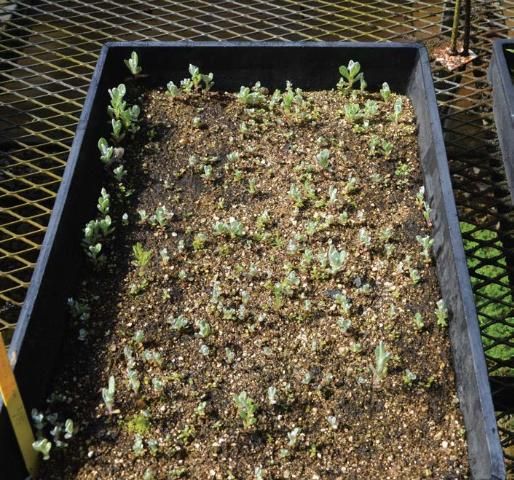
Credit: Gabriel Campbell, UF/IFAS
The two forms of Godfrey's goldenaster, forma viridis and forma godfreyi, are essentially distinguished by the type and density of leaf pubescence. Forma viridis lacks wooly pubescence on cauline leaves and all inflorescences, having principally green, sticky, glandular trichomes, while forma godfreyi consistently has long wooly (silver to white) pubescence on the cauline leaves, inflorescence bracts, and bracteoles.
Godfrey's goldenaster is a Florida state endangered endemic plant that only occurs in the coastal western half of the Florida Panhandle and one county in eastern coastal Alabama. This plant is found in coastal disturbed areas and within beach dune and scrub communities. Godfrey's goldenaster often occurs in large colonies on stable beach dunes and dune ridges.
Chrysopsis gossypina subsp. Cruiseana Cruise's goldenaster
The cottony goldenaster (Chrysopsis gossypina) is a short-lived perennial herbaceous forb native to the coastal plain from Louisiana to Virginia. The subspecies Cruise's goldenaster (Chrysopsis gossypina subsp. Cruiseana) is restricted to coastal sand dunes in Florida and a portion of Alabama and is classified as endangered by the state of Florida. Cruise's goldenaster co-occurs with both forms of Godfrey's goldenaster.
Vegetative and floral characteristics are similar among these two species. Basal foliage of rosette leaves is pubescent, but the density of trichomes is not sufficient for leaf surfaces to appear white or silver as described for Chrysopsis godfreyi f. godfreyi, and there are no glandular trichomes as described for Chrysopsis godfreyi f. viridis. A distinguishing characteristic among these three goldenasters is the lack of pubescence on cauline leaves of Chrysopsis gossypina subsp. Cruiseana. Cauline leaves of elongated inflorescences are distinctively glabrous, entire, and reduced in size in comparison to Godfrey's goldenaster. Fruits are achenes with 1 to several yellow to red gland-like ridges.
Propagation
Reproduction from seed was studied by Hooton (2011) to characterize seed production and germination requirements for these Chrysopsis from native populations in Escambia County, Florida. From mature flowers collected in a native setting, a range of 6,000 to 8,000 seeds was recorded per plant. In growth chamber studies, seed were shown to need light to germinate, and all three could be successfully germinated at alternating day/night temperatures of 30/20, 25/15, and 20/10°C to achieve 50 to 70% germination. Wild-collected seed may be thrashed from dried heads and sown directly in open flats without grading or further cleaning. Seedlings emerge within 3 weeks and can be transplanted to liner production flats or small pots and grown outdoors. Smith et al. (2014) produced landscape-quality transplants from seed in a variety of production substrates.
Vegetative propagation is also possible for Chrysopsis if terminal stem cuttings are collected during short days while plants remain vegetative.
However, once critical day length triggers floral development, the cuttings may root but will only produce inflorescences that have no ability to form subsequent vegetative growth. Cuttings will root readily within 7 days without supplemental auxin and should be removed from overhead mist as soon as roots are detected. The resulting rooted cuttings may be potted in standard, well-drained potting mix in 4-in pots and will be ready for outplanting within 4 to 6 weeks when rootballs have grown sufficiently to hold together.
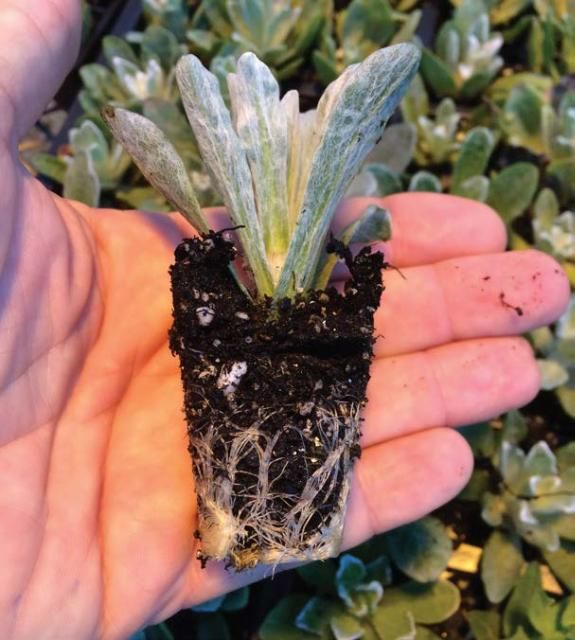
Credit: Mack Thetford, UF/IFAS

Credit: Mack Thetford, UF/IFAS
Outplanting
The authors have successfully planted all of these Chrysopsis from plants that filled 4-in pots that were propagated from either seedlings or rooted cuttings. Greatest outplanting success was achieved in late January with near 100% survival 4 months after planting. Plants were outplanted on backdunes midslope at least 12 in from each other and existing perennial grasses. Fertilizer (½ tsp Osmocote 18-6-12) application at the time of planting improved the aesthetic and increased biomass for these plants but was not necessary for survival.
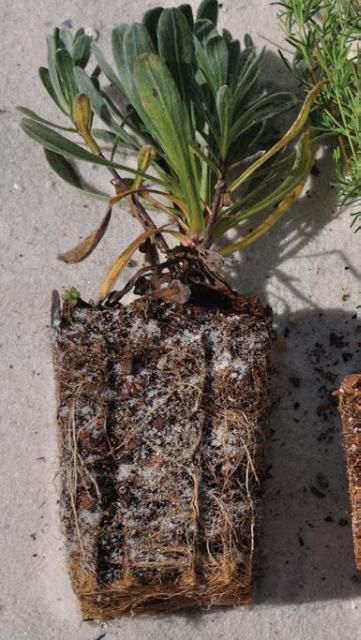
Credit: Emily Bagby, UF/IFAS
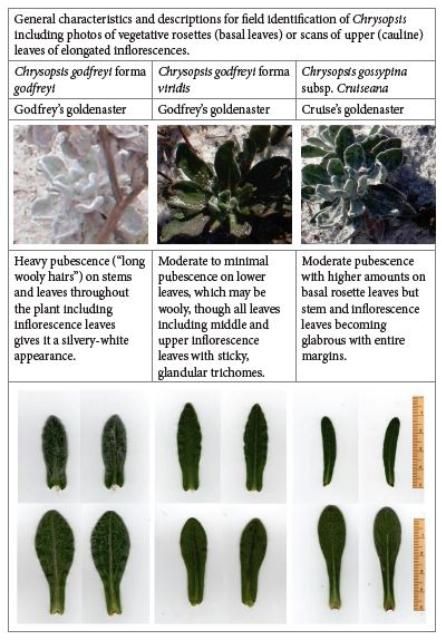
Credit: Rosettes, Natalie Hooton, UF/IFAS; cauline and basal leaves, Mack Thetford, UF/IFAS
References
Hooton, N. 2011. "Restoration strategies for improving survival and composition of plant species native to coastal dunes in the Florida Panhandle." Master's Thesis, University of Florida.
Smith, A.M., S.B. Wilson, M. Thetford, K.L. Nolan, and C. Reinhardt Adams. 2014. "Performance of nine Florida native wildflower species grown in varying container substrates." Native Plants Journal 15(1):75–86. doi:10.3368/npj.15.1.75
Florida Natural Areas Inventory (FNAI), 2000. Field Guide. Godfrey's goldenaster. https://www.fnai.org/PDFs/FieldGuides/Chrysopsis_godfreyi.pdf